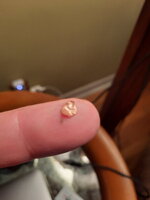I appreciate all the discussion. Nothing will vaporize my wife's support of my hunting faster than her or one of my boys biting a chunk of bullet. So while toxicity of lead is an important topic, it's not exactly what I was trying to ask about in this thread. Also I've seen how some of the other lead toxicity discussions have devolved into name calling and willful ignorance...
But since the worms are mostly out of the can at this point I might as well jump in as well:
I'm not super concerned about the acute effects of lead making me sick, as in "lead poisoning." But I do definitely have concerns about long term effects on my sons (8 & 11) both on their cognitive abilities and also when they have kids I don't want my grand kids to be a little slower because I fed lead to their dads.
Life is hard, it's harder if you're stupid. I don't want to set them up to be more stupid.
I'm not saying I know whether these effects would happen or not or that I'm making a decision based only on this possibility, but it is a factor in my thinking.
As mentioned before, a solid chunk of bullet in the meat would be catastrophic for my hunting. Most likely I'd catch them all while butchering, but that's another factor I'm considering.
If I decide to go with fragmenting lead bullets, I get the benefit of being able to use very small calibers and be able to spot my own impacts.
If I decide to go with monos, I need to bump up to a bit bigger to make up for the less violent terminal performance. This means a bit more recoil and probably not spotting my own shots.
So as I see it I'm choosing between eliminating the possibility of toxicity and solid fragments in food on one hand or being able to spot impacts on the

